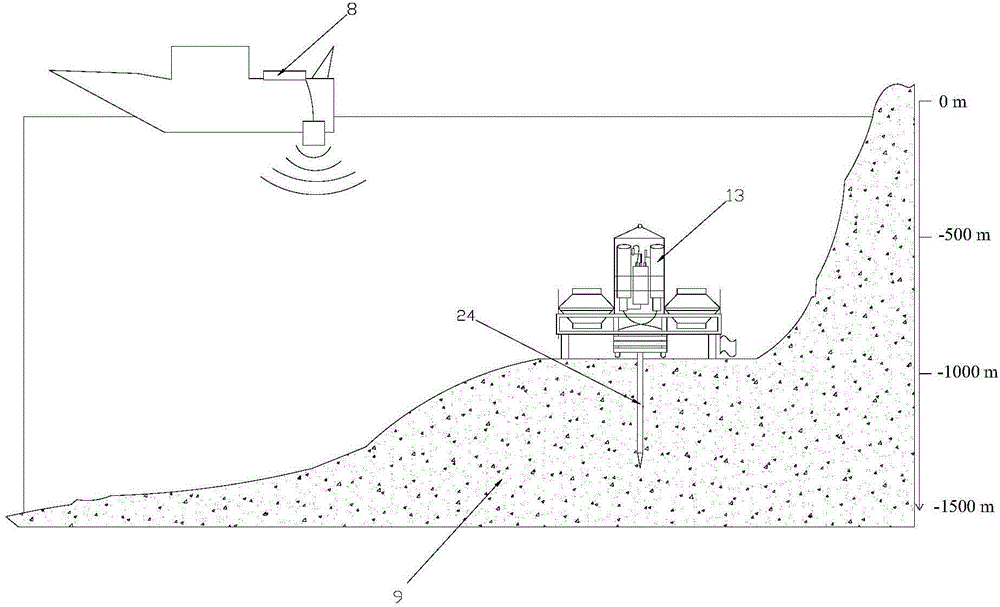Ocean floor heat flow long-time observed data collecting method
- Summary
- Abstract
- Description
- Claims
- Application Information
AI Technical Summary
Problems solved by technology
Method used
Image
Examples
Embodiment 1
[0064] A data acquisition method for long-term observation of seafloor heat flow, comprising the following steps:
[0065] Step 1: In the sea area to be observed, use a gravity sampler to collect samples for sediment analysis, and determine the location of the long-term observation base station for seabed heat flow; at the same time, install a small probe outside the gravity sampler tube to obtain the in-situ location of the seabed surface sediments Thermophysical parameters, and measure the thermal conductivity of the collected sediment samples to calculate the heat flow;
[0066] The second step: if figure 1 As shown, the long-term observation base station of seabed heat flow is connected to the large-tonnage acoustic releasers 51 and 52 with buoyancy cables 61 and 62 respectively, and the length ratio of the two buoyancy cables 61 and 62 is 2m:50m; the large-tonnage acoustic releasers 51 and 52 are then connected to the end of the geological winch steel cable 7; then the b...
Embodiment 2
[0082] The difference between embodiment 2 and embodiment 1 is only that the structure of the cable cutting mechanism 3 used is different. Composed with activity hook 33B; such as Figure 12 with 13 As shown, the cable clamping plate 32B is a horizontally placed cuboid with a thickness more than twice the diameter of the cable, and cross-shaped grooves perpendicular to each other are opened on the lower surface of the cuboid, and the depth of the deeper groove 321B is shallower. 1.2-1.5 times of the depth of the groove 322B, the width of the shallower groove 322B is enough to embed the cable; the top of the blade box 31B is parallel to the deeper groove 321B and fixedly connected with the cable pressure plate 32B, and the blade box 31B is The upper 2 / 3 section of the side exposed part parallel to the trend of the deeper groove 321B is provided with a longitudinally extending through hole 311B; the inside of the blade box 31B is provided with a blade 312B, and the edge of the ...
PUM
 Login to View More
Login to View More Abstract
Description
Claims
Application Information
 Login to View More
Login to View More - R&D
- Intellectual Property
- Life Sciences
- Materials
- Tech Scout
- Unparalleled Data Quality
- Higher Quality Content
- 60% Fewer Hallucinations
Browse by: Latest US Patents, China's latest patents, Technical Efficacy Thesaurus, Application Domain, Technology Topic, Popular Technical Reports.
© 2025 PatSnap. All rights reserved.Legal|Privacy policy|Modern Slavery Act Transparency Statement|Sitemap|About US| Contact US: help@patsnap.com



